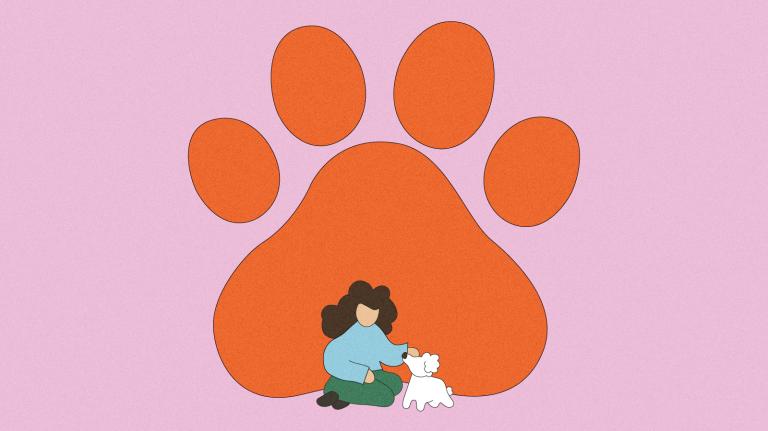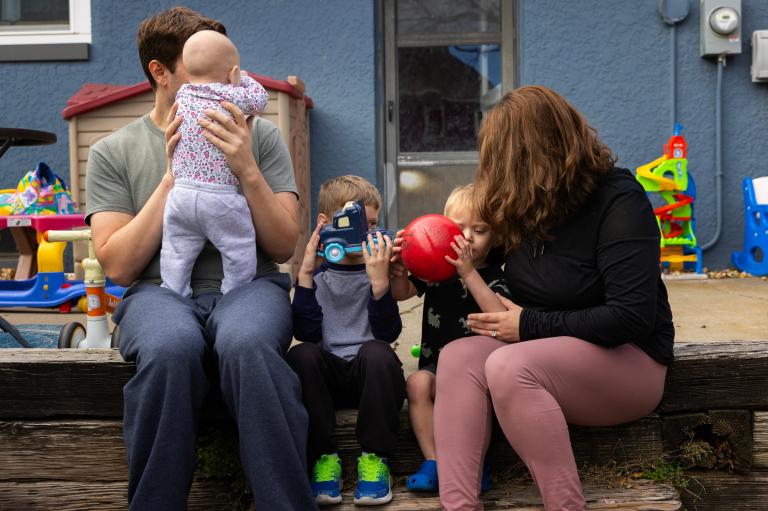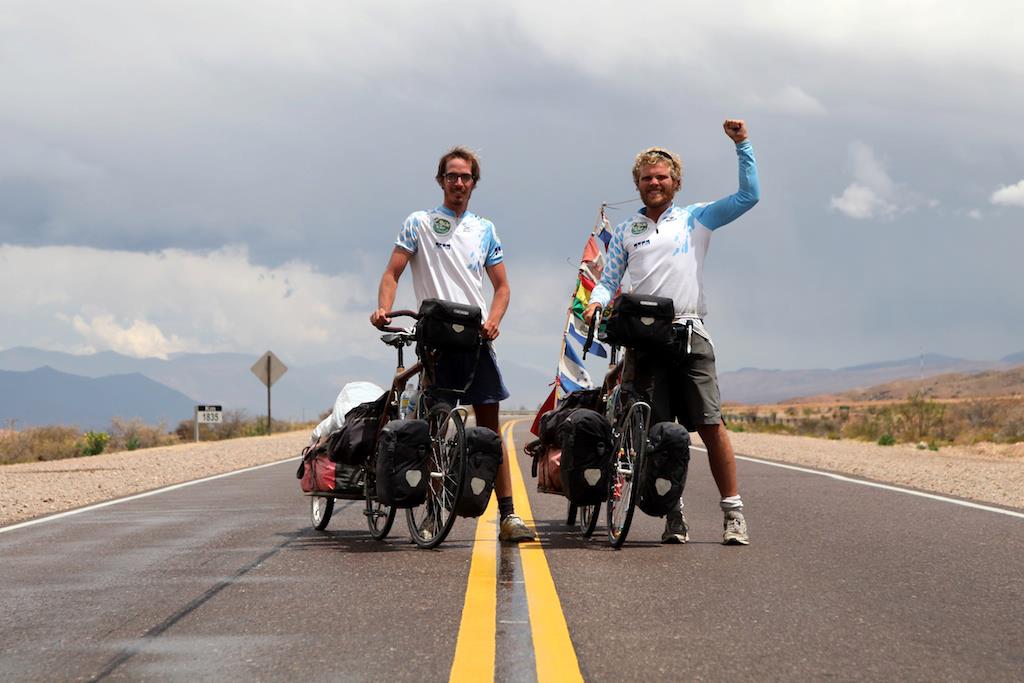 Joost Notenboom and Michiel Roodenburg.On July 4, 2010, Joost Notenboom and Michiel Roodenburg set off from Deadhorse, Alaska, on a more-than-18,000-mile journey to the southern tip of Argentina. Their chosen mode of transport: bamboo bicycles. Their mission: to raise awareness of the global water crisis that leaves more than 1 billion people without access to safe drinking water. Eighteen months, 14,000 miles, and 62 flat tires later, we caught up with them just long enough to ask a few questions about their trip so far — and their plans for when they finish, which, if all goes as planned, will happen in just a few more months. To learn more about their trip, or to support local water projects along their route, check out their website.
Joost Notenboom and Michiel Roodenburg.On July 4, 2010, Joost Notenboom and Michiel Roodenburg set off from Deadhorse, Alaska, on a more-than-18,000-mile journey to the southern tip of Argentina. Their chosen mode of transport: bamboo bicycles. Their mission: to raise awareness of the global water crisis that leaves more than 1 billion people without access to safe drinking water. Eighteen months, 14,000 miles, and 62 flat tires later, we caught up with them just long enough to ask a few questions about their trip so far — and their plans for when they finish, which, if all goes as planned, will happen in just a few more months. To learn more about their trip, or to support local water projects along their route, check out their website.
Q. What are a couple of Dutchmen doing shouting about water scarcity? Last I checked, there was no dearth of the wet stuff around your corner of the globe.
A. True, true. We actually started getting really interested in water once we finished our university exchange program in Israel a few years ago. (That’s also where we met.) Joost was writing his thesis on the issue of water in the Israeli/Palestinian conflict, and that was where we both saw that water is something that people will fight about.
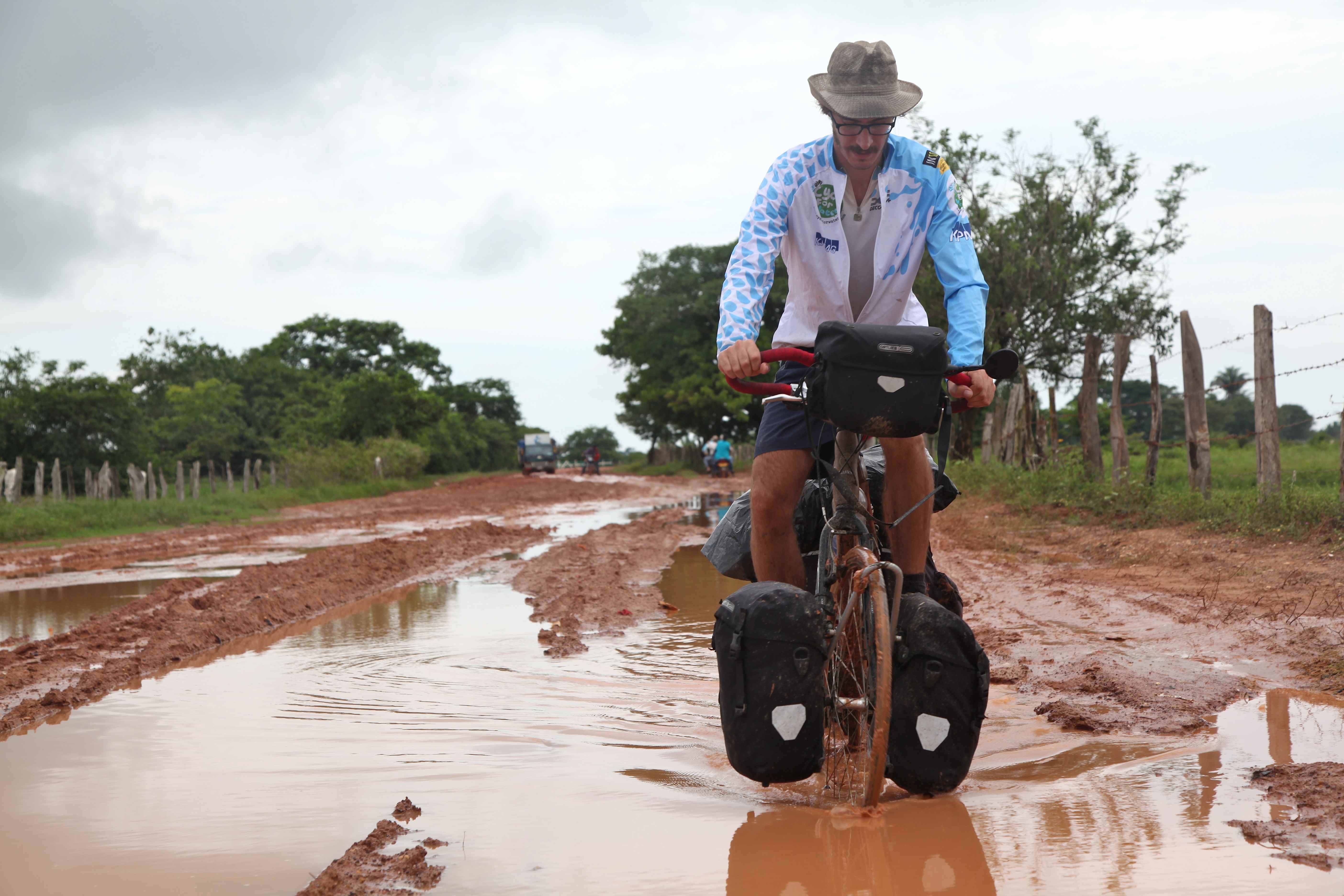 It’s also not only a question of scarcity. It’s about energy, about food, about climate change, about ecosystems. Water is the basic building block of life. So it’s true that back home, we don’t have many issues with access to clean water — everyone has a tap with water coming out — but we do feel the effects of climate change when the sea levels will start to rise; we do pollute our rivers through industry; and through international trade we increase our virtual water footprint.
It’s also not only a question of scarcity. It’s about energy, about food, about climate change, about ecosystems. Water is the basic building block of life. So it’s true that back home, we don’t have many issues with access to clean water — everyone has a tap with water coming out — but we do feel the effects of climate change when the sea levels will start to rise; we do pollute our rivers through industry; and through international trade we increase our virtual water footprint.
What we wanted to do with this trip is learn as much as possible about some of these different issues surrounding water.
Q. Tell the truth, is this not just an excuse to have an epic cycling adventure?
A. Also very true. We cannot say that this is something that we hate doing. It’s a lot of fun, and every day is another adventure, literally. But who says you can’t do both? Trying to do some good doesn’t have to be sacrificial or tiresome; you can have fun while doing it, right?
Visiting these water projects, trying to learn something, doing presentations to share our experiences — that keeps it very interesting for us. We also get to visit places where tourists normally don’t come. This is because we’re cycling through some of the tiniest little towns, and on some of the shittiest and most deserted back roads. But it is also because we get asked to come check out remote projects, or talk at universities. This way we get to know so much more about a place and its people than doing a standard Lonely Planet-guided backpack trip.
Q. Have you ever attempted to ghost ride your bikes into a ditch and book a flight home?
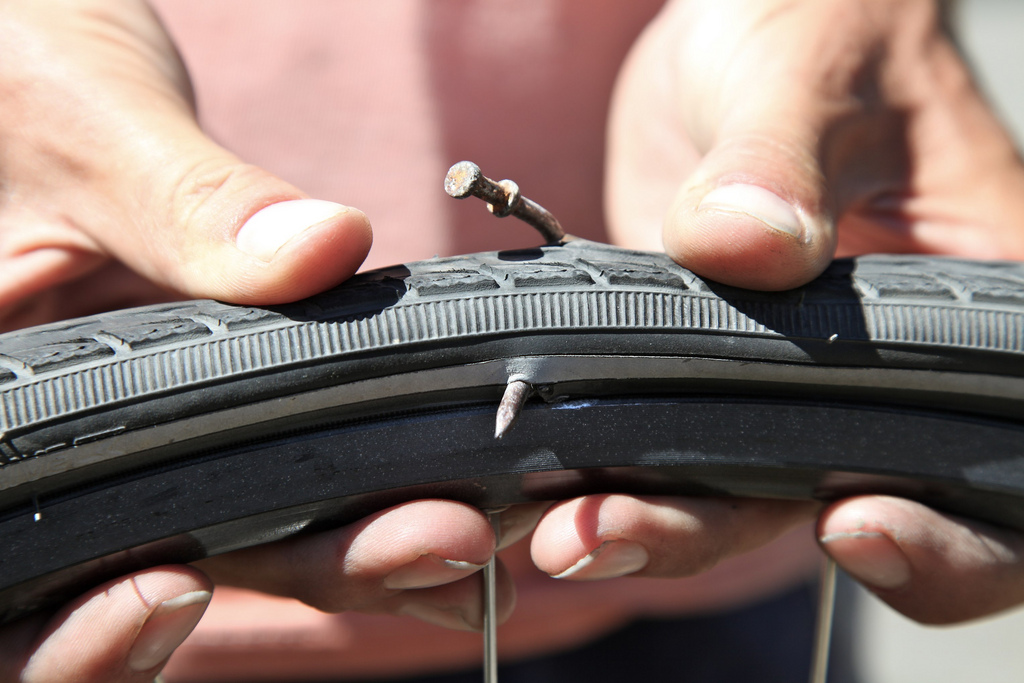 A. We’ve seen a lot of beauty, and we’ve lived together every day for the past 18 months. We’ve shared all the ups and the downs, and we both think this is a big reason why we haven’t been tempted to book a flight back yet. There’s always someone to cheer you up or push you along; doing this kind of thing alone would be something very, very different.
A. We’ve seen a lot of beauty, and we’ve lived together every day for the past 18 months. We’ve shared all the ups and the downs, and we both think this is a big reason why we haven’t been tempted to book a flight back yet. There’s always someone to cheer you up or push you along; doing this kind of thing alone would be something very, very different.
But the most inspiring thing so far has to be the kindness of the people we meet along the way. It’s sort of unusual to see two guys on bamboo bikes hauling trailers full of gear. We guess it’s instantly clear we’re going a long way and people respond to that by offering us a place to stay, advice on travel conditions, a kind word, food, or just a wave from their car as they pass us by. We’ve had so many encounters with wonderful people that it has completely reinforced our faith in humanity.
Q. What does the water crisis look like? What are some of the images that will stick in your minds?
A. It really is water crises (plural). It has so many faces. It might be a global issue, but every country or region has its own specific consequences and realities.
 It’s for instance the three little girls pulling a rope together to haul one bucket of water from a well in the tiny little mountain community of Xepatan, in Guatemala. It’s hard work, and because these girls have to help their mom doing these chores, this means they cannot go to school. Access to a clean water supply, more than anything else, gives you time. Not having to walk hours a day simply fetching and carrying water means that kids (because it’s mostly them that do this) can just be kids, and play and go to school.
It’s for instance the three little girls pulling a rope together to haul one bucket of water from a well in the tiny little mountain community of Xepatan, in Guatemala. It’s hard work, and because these girls have to help their mom doing these chores, this means they cannot go to school. Access to a clean water supply, more than anything else, gives you time. Not having to walk hours a day simply fetching and carrying water means that kids (because it’s mostly them that do this) can just be kids, and play and go to school.
It’s also the image of not seeing the pink river dolphin in the Amazon Basin. We were invited to go to the Amazon and learn more about this, the largest reservoir of freshwater on our planet, draining more than one-fifth of the world’s total river flow. River dolphins are a bellwether species in this aquatic environment, and their health is directly correlated to the health of the forest. Not seeing them means that their environment is most likely in trouble, and we learned that this is mainly due to big hydroelectric projects, pollution [from] gold mining, and deforestation.
Q. Tell us about some of the water projects you’ve seen or been involved in.
A. There are so many examples of successful projects that made a difference in the lives of those they were intended for. There are solutions for the billion people who don’t have access to clean water today; there are solutions for the 2.5 billion who don’t have access to basic sanitation. It’s a matter of reaching those people and giving them that one little push so they can help themselves. Because — and we’ve seen this time and time again — it’s always the local people themselves who want to change their own situation. They get fed up with their kids getting sick, or their crops failing, or their animals dying, and they are clever and proud and entrepreneurial enough to seek out solutions.
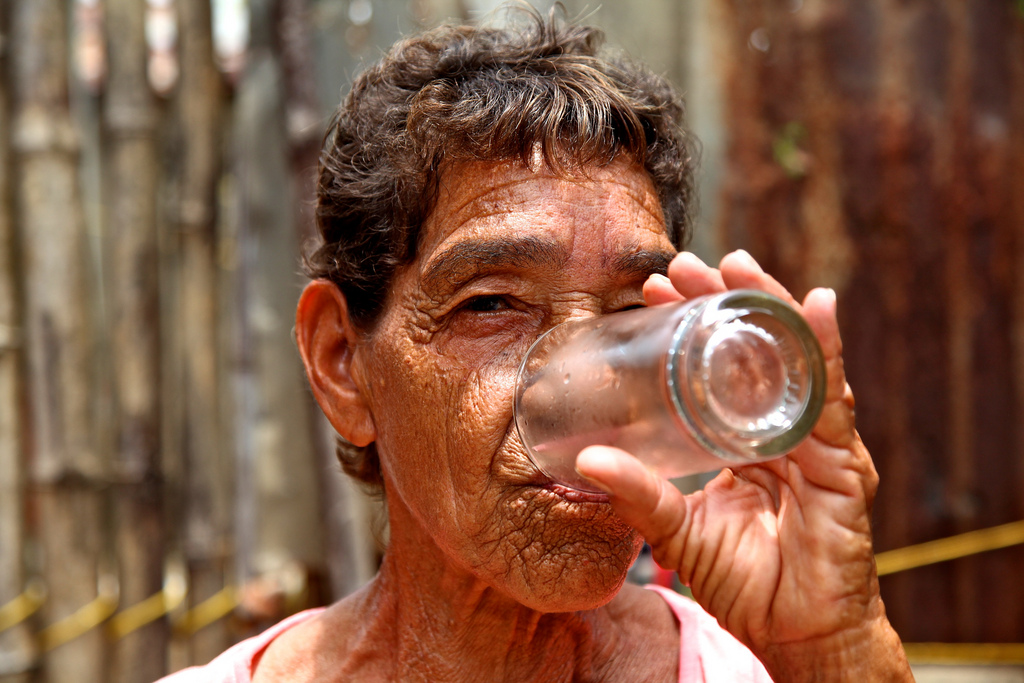 We remember going to a fancy university in Costa Rica, and the people there showed us a biodigester they had made which collected all the waste from the student dorms and turned it into energy and clean water. This was their prototype and they were very proud of it. A few months later, in Colombia, we saw the same thing at someone’s farm. He had built his own biodigester a few years back because he couldn’t afford his electricity bill anymore. He’d just thought of it and it seemed to him like a good idea. Now he collects the sewage from his own house and from his pigs and converts that into power and water. The waste is then used as fertilizer. Sustainable development in action!
We remember going to a fancy university in Costa Rica, and the people there showed us a biodigester they had made which collected all the waste from the student dorms and turned it into energy and clean water. This was their prototype and they were very proud of it. A few months later, in Colombia, we saw the same thing at someone’s farm. He had built his own biodigester a few years back because he couldn’t afford his electricity bill anymore. He’d just thought of it and it seemed to him like a good idea. Now he collects the sewage from his own house and from his pigs and converts that into power and water. The waste is then used as fertilizer. Sustainable development in action!
Q. What good are you? What have you done to help solve the problem?
A. We can’t solve the problem, so we’re probably not very good. We’re not the fastest cyclists either, nor the strongest; and we’re not even the first. We haven’t raised the most money, or brought our own water footprint down to zero … Riding a bicycle from the Arctic to the Antarctic … is actually sort of easy. But effecting real change is difficult and slow …
We are raising donations for small, local water projects, and we’ve deliberately not chosen to raise funds for one big, international NGO. We like those small projects that previously didn’t have a chance of reaching out to international private donors, and had to depend solely on public money. So we’ve supported one pump-building project in Guatemala so far; getting that $20,000 budget financed took a long time. And now we’re trying to do the same for another water filtration project in Colombia for which $10,000 has already been raised, and that still needs $4,000.
Q. I must ask. The bikes. The poor bikes. They’re made of bamboo and hemp, for chrissake. Will they live to see the end?
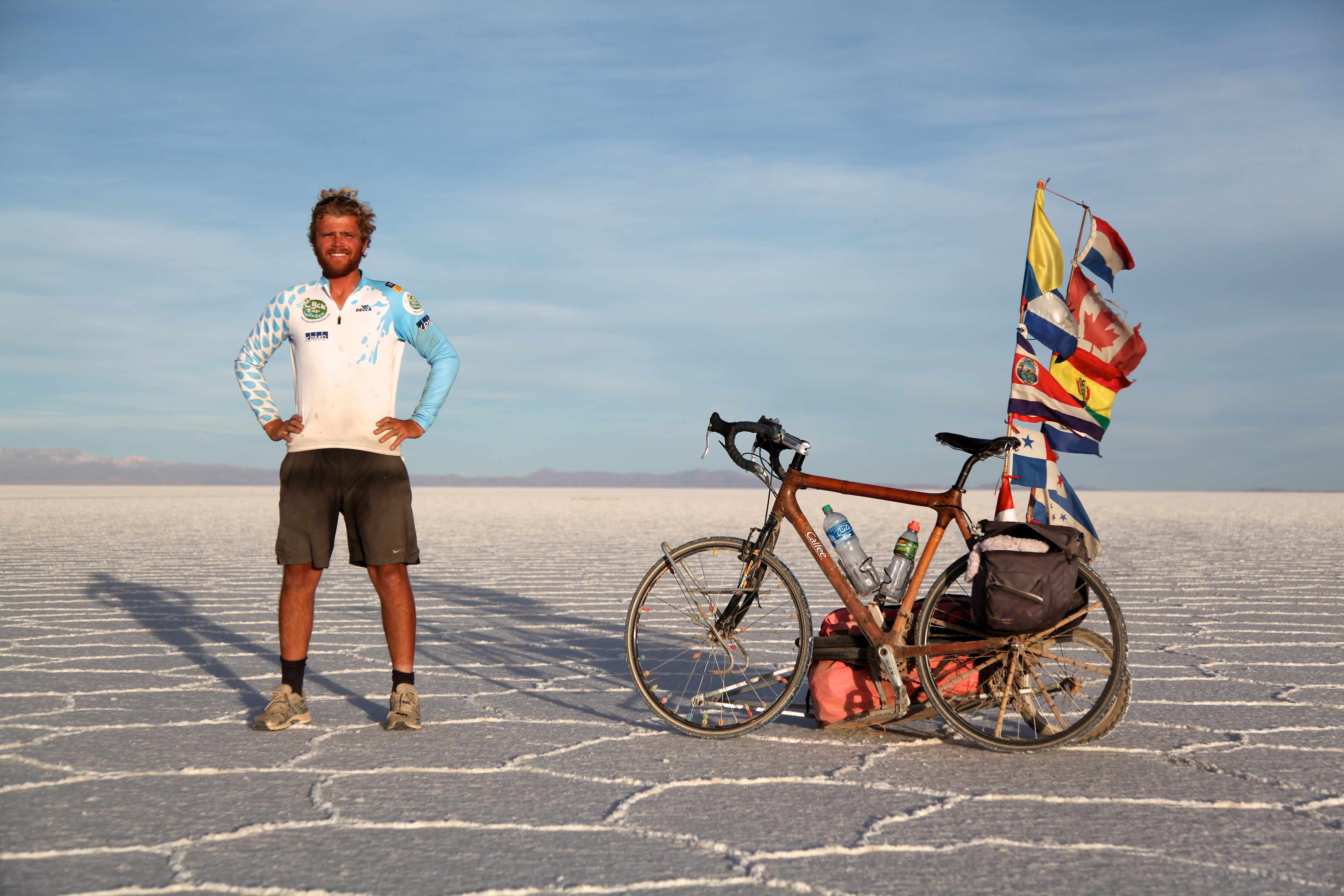 A. Well they’d better, haha! We came all this way, it would be a shame to have to walk the last few thousand kilometers! We’ve actually never had any problems with the bamboo or hemp. We had one problem in the very beginning, when on the third day the titanium dropout that holds up the back derailleur, broke off! Titanium broke; bamboo was fine.
A. Well they’d better, haha! We came all this way, it would be a shame to have to walk the last few thousand kilometers! We’ve actually never had any problems with the bamboo or hemp. We had one problem in the very beginning, when on the third day the titanium dropout that holds up the back derailleur, broke off! Titanium broke; bamboo was fine.
But there are a few reasons why we chose these bamboo bikes to ride on. For one, nobody has ever done it — cycle from the Arctic to the Antarctic on these kinds of bicycles. Secondly, the flexibility of the bamboo helps absorb shocks whenever we have to cycle on bad roads. And believe us, we’ve seen our share of shitty roads, haha! Last but not least, it’s sustainable and very cool!
Q. What next? Paddle boat around the planet? Achieve world domination and solve the global water crisis? Sit around and watch the telly and get fat?
A. Hahaha. Well the good thing about riding a bicycle for such a long time is that it gives you ample opportunity to think about the future. So what we came up with is, first, go home, drink a few beers, meet some nice girls, and sleep for a few weeks! Then it might be time to get into a rowboat. Cycling is kind of focused on one set of muscles, so we might have iron legs by now but the upper body is in need of a good workout! One thing we know for sure is that we will be doing these kinds of adventures in the future. It’s the best thing we ever did!


